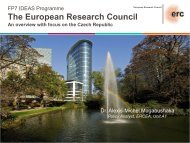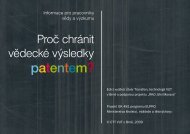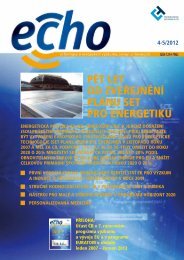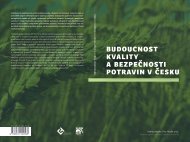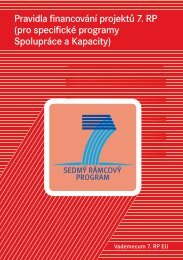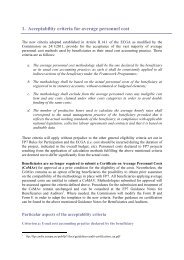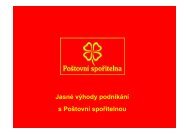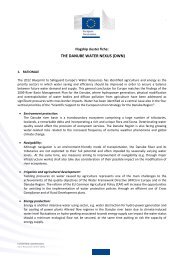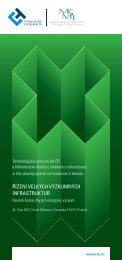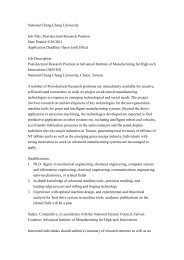Guide to Research and Innovation Strategies for Smart Specialisation
Guide to Research and Innovation Strategies for Smart Specialisation
Guide to Research and Innovation Strategies for Smart Specialisation
You also want an ePaper? Increase the reach of your titles
YUMPU automatically turns print PDFs into web optimized ePapers that Google loves.
Step 6 - Integration of moni<strong>to</strong>ring <strong>and</strong> evaluation mechanisms<br />
Mechanisms of programme <strong>and</strong> project moni<strong>to</strong>ring <strong>and</strong> output <strong>and</strong> results/outcome evaluation<br />
should be integrated in the strategy from the very beginning, being designed as core components.<br />
Moni<strong>to</strong>ring refers <strong>to</strong> the need of verifying the state of implementation of activities. Evaluation<br />
refers <strong>to</strong> assessing whether <strong>and</strong> how strategic goals are met. In order <strong>to</strong> per<strong>for</strong>m evaluation, it is<br />
essential that objectives are clearly defined in a RIS3 in measurable terms. A central task of RIS3<br />
design is <strong>to</strong> identify a parsimonious yet comprehensive set of output <strong>and</strong> results/outcome<br />
indica<strong>to</strong>rs <strong>and</strong> <strong>to</strong> establish target values <strong>for</strong> each of them.<br />
The design ef<strong>for</strong>t a RIS3 implies does not come <strong>to</strong> an end when the strategy moves on <strong>to</strong> the<br />
implementation phase. A strategy <strong>for</strong> smart specialisation should evolve <strong>and</strong> adjust <strong>to</strong> changes in<br />
economic <strong>and</strong> framework conditions, as well as <strong>to</strong> emergence of new evidence during<br />
implementation through evaluation <strong>and</strong> moni<strong>to</strong>ring activities.<br />
Example 7 - Integrated moni<strong>to</strong>ring <strong>and</strong> evaluation in Lower Austria<br />
The <strong>Innovation</strong> Assessment Methodology Lower Austria is a comprehensive system of<br />
different moni<strong>to</strong>ring <strong>and</strong> evaluation <strong>to</strong>ols <strong>for</strong> Lower Austria’s innovation policy. Its aim is <strong>to</strong><br />
gain insight in<strong>to</strong> the results <strong>and</strong> impact of innovation support services with the aim of<br />
improving delivery instruments, justify amounts spent <strong>and</strong> promote its success.<br />
One of the <strong>to</strong>ols used is the Balanced Scorecard Methodology, a strategic per<strong>for</strong>mance<br />
management <strong>to</strong>ol, developed <strong>and</strong> heavily used in the private sec<strong>to</strong>r. In Lower Austria it is<br />
used <strong>to</strong> define the objectives <strong>and</strong> target figures <strong>for</strong> the 6 pillars of Lower Austria’s economic<br />
strategy (including innovation) <strong>and</strong> <strong>to</strong> break them down at intermediary level as well as at<br />
programme level.<br />
A particularly important source of in<strong>for</strong>mation <strong>and</strong> indications on how <strong>to</strong> review a RIS3 is peer<br />
review, which is a comprehensive RIS3 examination carried out by peer regions. Engaging in<br />
this sort of exercises allows learning lessons from regions that might have already experienced<br />
some of the problems the peer-reviewed region is facing <strong>and</strong>/or establishing direct contact with<br />
potential partners <strong>for</strong> cooperation.<br />
25



